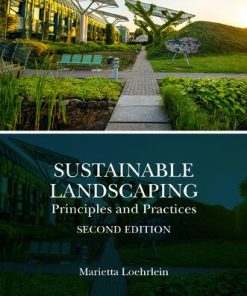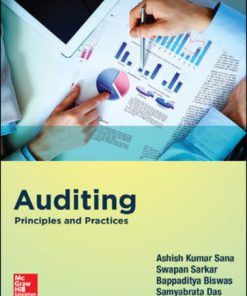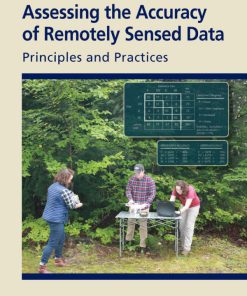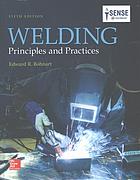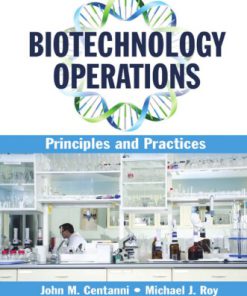Food emulsions principles practices and techniques Third Edition by David Julian Mcclements ISBN 1498726682 978-1498726689
$50.00 Original price was: $50.00.$25.00Current price is: $25.00.
Food emulsions principles practices and techniques Third Edition by David Julian Mcclements – Ebook PDF Instant Download/Delivery: 1498726682, 978-1498726689
Full download Food emulsions principles practices and techniques Third Edition after payment

Product details:
ISBN 10: 1498726682
ISBN 13: 978-1498726689
Author: David Julian Mcclements
Continuing the mission of the first two editions, Food Emulsions: Principles, Practices, and Techniques, Third Edition covers the fundamentals of emulsion science and demonstrates how this knowledge can be applied to control the appearance, stability, and texture of emulsion-based foods. Initially developed to fill the need for a single resource covering all areas of food emulsion formation, stability, characterization, and application, the first two editions raised the bar for references in this field. This third edition is poised to do the same.
See What’s New in the Third Edition:
- New chapters have been added on Emulsion-Based Delivery Systems and the Gastrointestinal Fate of Emulsions
- All chapters have been revised and updated, including new methods of fabricating and characterizing emulsions
- New figures have been included, and previous ones have been redrawn
As in previous editions, the main focus of this book is on presenting the fundamental principles of emulsion science and technology that underlie all types of emulsion-based food products. It highlights practical applications and provides an overview of modern areas of research. Figures and diagrams add emphasis to important concepts and present the underlying theory in a clear and approachable manner. These features and more give you a firm grounding in basic principles that will aid in the rational design of new products, the improvement of existing products, and the more rapid solution of processing problems.
Table of contents:
Context and Background
Emulsion Science and Technology in the Food Industry
General Characteristics of Food Emulsions
Emulsion Properties
Hierarchy of Emulsion Properties
Understanding Food Emulsion Properties
Overview and Philosophy
References
Molecular Characteristics
Introduction
Forces of Nature
Origin and Nature of Molecular Interactions
Overall Intermolecular Pair Potential
Molecular Structure and Organization Is Determined by a Balance of Interaction Energies and Entropy Effects
Thermodynamics of Mixing
Molecular Conformation
Compound Interactions
Computer Modeling of Liquid Properties
Measurement of Molecular Characteristics
References
Colloidal Interactions
Introduction
Colloidal Interactions and Droplet Aggregation
Van der Waals Interactions
Electrostatic Interactions
Steric Interactions
Depletion Interactions
Hydrophobic Interactions
Hydration Interactions
Thermal Fluctuation Interactions
Nonequilibrium Effects
Total Interaction Potential
Measurement of Colloidal Interactions
Prediction of Colloidal Interactions in Food Emulsions
References
Emulsion Ingredients
Introduction
Fats and Oils
Water
Texture Modifiers
Other Food Additives
Factors Influencing Ingredient Selection
References
Interfacial Properties and Their Characterization
Introduction
General Characteristics of Interfaces
Adsorption of Solutes to Interfaces
Interfacial Composition and Its Characterization
Interfacial Structure
Interfacial Tension and Its Measurement
Interfacial Rheology and Its Measurement
Chemical and Biochemical Properties of Interfaces
Practical Implications of Interfacial Phenomena
References
Emulsion Formation
Introduction
Overview of Emulsion Formation
Flow Profiles in Homogenizers
Physical Principles of Emulsion Formation
Homogenization Devices
Factors Influencing Droplet Size
Low-Energy Homogenization Methods
Demulsification
Future Developments
References
Emulsion Stability
Introduction
Thermodynamic and Kinetic Stability of Emulsions
Gravitational Separation
Droplet Aggregation: General Features
Coalescence
Partial Coalescence
Ostwald Ripening
Chemical and Biochemical Stability
References
Emulsion Rheology
Introduction
Rheological Properties of Materials
Measurement of Rheological Properties
Computer Simulation of Emulsion Rheology
Major Factors Influencing Emulsion Rheology
Concluding Remarks and Future Directions
References
Emulsion Flavor
Introduction
Flavor Partitioning
Flavor Release
Emulsion Mouthfeel and Oral Processing
Measurement of Emulsion Flavor
Concluding Remarks and Future Directions
References
Appearance
Introduction
General Aspects of Optical Properties of Materials
Mathematical Modeling of Emulsion Color
Measurement of Emulsion Color
Major Factors Influencing Emulsion Color
Concluding Remarks and Future Directions
References
Gastrointestinal Fate of Emulsions
Introduction
Overview of Emulsion Passage through the GIT
Potential Changes in Emulsion Characteristics
Reasons for Controlling Gastrointestinal Fate of Emulsions
Conclusions and Future Directions
References
Food Emulsions in Practice
Introduction
Milk and Cream
Beverage Emulsions
Dressings
References
Emulsion-Based Delivery Systems
Introduction
Emulsions and Nanoemulsions
Multiple Emulsions
Multilayer Emulsions
Solid Lipid Particles
Filled Hydrogel Particles
Microclusters
Miscellaneous Systems
Summary
References
Characterization of Emulsion Properties
Introduction
Testing Emulsifier Effectiveness
Microstructure and Droplet Size Distribution
Disperse Phase Volume Fraction
Droplet Crystallinity
Droplet Charge
Droplet Interactions
Summary
References
Index
People also search for:
food emulsions principles practices and
mcclements dj 2015 food emulsions principles practices and techniques
mcclements dj 2005 food emulsions principles practices and techniques
food emulsions principles practices and techniques third edition
food emulsions principles practices and techniques pdf
Tags: David Julian Mcclements, Food emulsions, principles practices, and techniques
You may also like…
Technique - Food Manufacturing
Business & Economics - Accounting
Auditing: Principles and Practices 1st Edition Ashish Kumar Sana
Science (General)
Engineering
Science (General)





